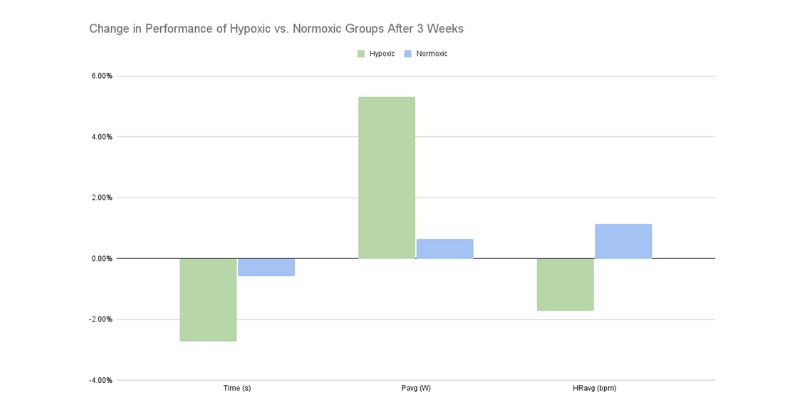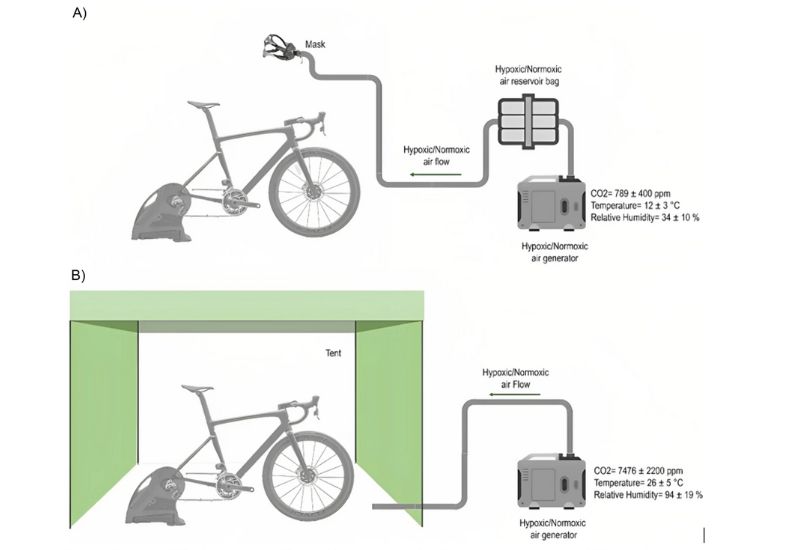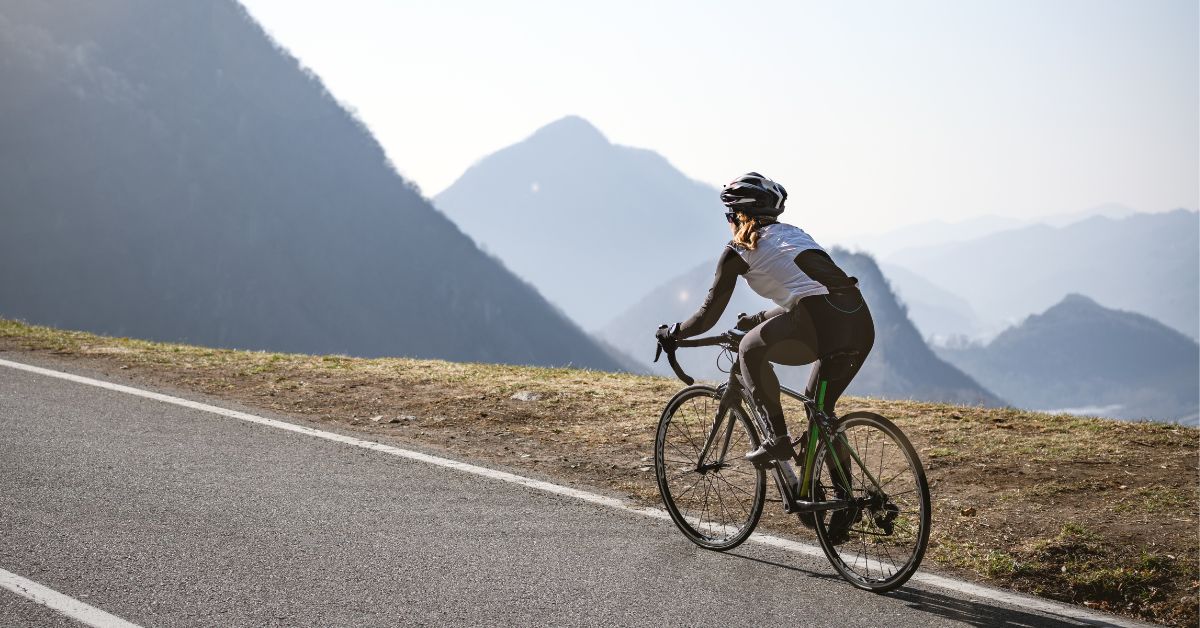Altitude training is challenging but beneficial for cyclists preparing for their next big event. Cycling at high elevations significantly impacts the body and forces it to adapt. Therefore, some athletes arrive early to acclimate to the conditions.
The impact on glycolytic enzyme activity is one of the most significant differences in altitude and sea-level training. Here’s what cyclists need to know about their physiological changes in high elevations and how their training should adapt.
How Altitude Training Impacts Glycolytic Enzyme Activity
Trainers and researchers focus on red blood cell count at high elevations because of the significant increase in red blood cells. Research shows that high-altitude environments increase red blood cell mass, and athletes may need up to three weeks to acclimate. However, glycolytic enzyme activity is sometimes overlooked in cyclists. This bodily process drastically impacts performance at altitude.
First, cyclists experience metabolic adaptation when they train in high elevations. Hypobaric hypoxia challenges the body’s oxygen levels and tissue metabolism. Sometimes it depends on the athlete’s genetics and their acclimation to the climate.
Living in high-altitude areas alters metabolic function and makes it easier to perform. A 2020 Current Opinion in Endocrine and Metabolic Research study finds that long-term residence in high elevations enhances glycolysis for the EPAS1 gene.
Most cyclists see different glycolytic enzyme activity because the high altitude alters phosphofructokinase production. This enzyme is less present in the body due to the hypoxic environment, considering the metabolism focuses more on aerobics.
Altitude training makes the mitochondria denser because it responds to oxidative stress and higher rates of ATP hydrolysis. Share on XWhen training at high elevations, the body relies on glycolysis but also focuses on the tricarboxylic acid (TCA) cycle when oxygen is insufficient. A 2023 Science of the Environment study finds that hypobaric hypoxia exposure improves the TCA cycle, whereas the conditions inhibit glycolysis. The researchers attributed pyruvate acid to the stimulation, lending an explanation to cyclists and their bodies’ reactions.
The mitochondria is another critical consideration for glycolytic activity. Cyclist’s bodies require oxygen despite the limited availability, so they rely on this part of the cell for necessary energy. Altitude training makes the mitochondria denser because it responds to oxidative stress and higher rates of ATP hydrolysis. Cyclists need their cells to produce more mitochondria to maintain high energy levels while training in elevated areas.
It’s also essential for cyclists to understand what happens with their lactate tolerance in altitude training. Energy systems produce adenosine triphosphate (ATP) despite the lack of oxygen, and the muscles simultaneously build lactic acid. Cyclists are familiar with this because some believe it causes a burning feeling. However, the body converts it to glucose and produces more ATP to increase stamina.
The body faces the challenge of a lower maximal lactate steady state (MLSS) when training at high altitudes. Therefore, cyclists see their CO2 production and VO2 decrease. A 2024 American Journal of Physiology study examines the differences among cyclists at 2,222 meters, 1,111 meters and sea level. The researchers find that the athletes at 2,222 meters had a significantly lower MLSS power output than the other groups, demonstrating the profound effects of elevation.
What an Altitude Training Regimen Should Contain
While cycling is more complicated, the high altitude has some advantages. For example, consistent training at these heights produces better performances once cyclists return to typical elevations. Oxygen capacity depends on the person, but long training periods improve this metric and lead to better results.
Consistent training at these high altitude produces better performances once cyclists return to typical elevations. Oxygen capacity depends on the person, but long training periods... lead to better results. Share on XAltitude training can push cyclists to their limits, so it’s critical to have a targeted training regimen. The conditions at high elevations take some factors out of their control and force their bodies to change. Therefore, athletes must be ready for the harsh elements.
Optimized training may depend on the athlete’s DNA and the specific conditions they endure at altitude. That said, research has supported particular types of training to support them. A 2023 Applied Sciences study found cyclists in hypoxia high-intensity interval training (HHIT) experienced greater performance improvements than the normoxia group at a lower elevation. This result gives cyclists direction for enhanced training methods.

Data Source: “The Effects of Intermittent Hypoxic Training on Aerobic Capacity and Endurance Performance in Cyclists.”
What should the HHIT training look like? Cyclists can learn from a 2020 Frontiers in Sports and Active Living study. In this analysis, the cyclists started with three weeks of endurance training before moving to a hypoxic chamber. Then, the athletes did five repeated sprint training in hypoxia (RSH) sessions over 10 days. Each workout required them to execute seven all-out sprints for six seconds before leveraging active recovery.
The exercise started with a 12-minute warmup and two blocks of seven sprints. After the first half, the cyclists had a 10-minute recovery stage before the third and fourth sections of sprints. The final section included a 10-minute active cooldown to end the workout.
Once complete, the researchers analyzed the power output, heart rate, peripheral oxygen saturation (SpO2) and other critical metrics. The study found the athletes’ basal SpO2 increased by 2.5 percentage points between the first and fifth sessions. Was the workout satisfactory as future guidance for athletes? The researchers concluded the RSH intervention was an efficient workout for professional cyclists and improved total work.
How should carbohydrate intake differ when training at altitude? Research suggests it should be a 35% increase to improve performance, says Jack Shaw. Share on XThe 2023 Applied Sciences study discovered a few other workouts are conducive to athletes training at high altitudes. While intense training is necessary, the researchers also found submaximal exercises aided physiological adaption for athletes. For example, cyclists should integrate tempo rides into their regimen. This exercise could include a 60-minute ride using about 80% of the maximum heart rate, thus increasing their lactate threshold.
Submaximal exercises are advantageous for athletes because they construct a cyclist’s aerobic base and introduce workouts that reduce the risk of overtraining. While less intense, these regimens are critical to a cyclist’s fitness. A 2022 Biology study found endurance submaximal exercise in hypoxia improved metabolic and cardiac responses for healthy men compared to their normoxia training.
Considerations for Altitude Training
Physiological changes and training regimens are critical for altitude training. Additionally, cyclists must focus on other factors to optimize their performance in high elevations. Gear is an excellent starting point, because it can make the cycling regimen easier.
For instance, cyclists should wear compression clothing because it improves oxygen levels despite the elevation. This gear is most important on the lower body—especially the quads and calves—to improve blood flow and reduce the effects of muscle vibrations. Lactic acid is a by-product of glycolysis, so compression clothing is necessary for optimal performance.
Another consideration for cyclists is their residence and practice locations. Sustained altitude training requires living in or close to an area with high elevation. Cyclists in Salt Lake City, Utah, or Mammoth Lakes, California, may have the upper hand because of the geography. However, there are solutions for athletes who live far from these advantageous areas.
One of the choices cyclists have is an altitude mask. This solution may alienate athletes because of its reputation, with some questioning its efficacy when improving oxygen capacity. However, relying on research and leveraging professional insight is vital before deciding whether to use it. A 2024 Sports Sciences for Health study cleared the air on whether cyclists should leverage altitude masks for their training.
The researchers divided the cyclists into two groups, with half wearing the RSH mask and the other half using an RSH tent. Each group tested their sprint number and power output until failure for eight sessions. The study also measured the athletes’ VO2, SpO2, heart rate, core temperature, and muscle oxygen saturation (SmO2). The participants experienced improved anaerobic performance with the altitude mask, thus proving the tool’s worthiness.

Image Source: “Mask vs. tent: effect of hypoxia method on repeated sprint ability and physiological parameters in cyclists.” Creative Commons License here.
The study also validated using RSH tents, considering the cyclists’ performance improved with both methods. However, the tent excelled over the mask because it improved their core adaption. Ultimately, the best method for cyclists depends on their available resources and preferences. The tent and mask methods require large air compressors to treat the air and mimic high altitude, so coaches must consider their budgets for the best option.
Dietary Considerations in Altitude Training
The final considerations for cyclists in altitude training should be their diets. These unfamiliar conditions require athletes to consume more calories because their bodies work harder
to produce optimal power. Cyclists should focus on carbohydrates the most out of the micronutrients because they’re the body’s primary energy source. If not, they risk underfueling their bodies and compromising athletic performance.
How should carbohydrate intake differ when training at altitude? Research suggests it should be a 35% increase to improve performance. A 2020 Frontiers in Sports and Active Living article investigated the effects of carbohydrate intake on Olympic athletes during altitude training. The researchers found a 35% increase in carbohydrates improved their diet composition but did not significantly affect blood metrics.
While the snacks didn’t drastically change the blood dimensions in the study, cyclists should focus on micronutrients when training at high elevations. For instance, iron is a crucial part of their diet because it aids red blood cell production. Athletes should prioritize leafy greens, meat, legumes and other fortified meals. Vitamins B, C, E and magnesium are other small but integral parts of altitude training.
Some cyclists benefit from supplements during hypoxia, so they’re worth considering for coaches and athletes. A 2024 Exercise, Fitness and Human Performance and Health study examined common nutritional supplements to determine their effectiveness for cyclists in hypoxia training. While sildenafil and ischemic preconditioning (IPC) were not beneficial, the researchers found NO3 and beetroot (BR) optimized endurance.
Optimizing Altitude Training and Scrutinizing the Details
Coaches and their athletes should leave no stone unturned when searching for a competitive edge. One detail cyclists should pay attention to when altitude training is their glycolytic enzyme activity. High elevations make this bodily function less prevalent and significantly change the body’s metabolism.
These conditions require athletes to optimize their training and diet for peak performance. Cyclists should use hypoxia chambers and altitude masks and increase their carbohydrate intake when preparing for altitude competitions. A holistic approach is necessary to conquer the high altitude and deliver the best athletic performance.
Since you’re here…
…we have a small favor to ask. More people are reading SimpliFaster than ever, and each week we bring you compelling content from coaches, sport scientists, and physiotherapists who are devoted to building better athletes. Please take a moment to share the articles on social media, engage the authors with questions and comments below, and link to articles when appropriate if you have a blog or participate on forums of related topics. — SF
Reference
Chang, W.-Y., Wu, K.-C., Yang A.-L., et al. (2023). Simulated Altitude Training and Sport Performance: Protocols and Physiological Effects. Applied Sciences. 13(20).
Liu, G., Li, Y., Lao, N, et al. (2023). Energy Metabolic Mechanisms for High Altitude Sickness: Downregulation of Glycolysis and Upregulation of the Lactic Acid/Amino Acid-Pyruvate-TCA Pathways and Fatty Acid Oxidation. Science of the Total Environment. 894(10).
Faiss, R., & Rapillard, A. (2020). Repeated Sprint Training in Hypoxia: Case report of Performance Benefits in a Professional Cyclist. Frontiers in Sports and Active Living.
Koivisto-Mørk, A. E., Paur, I., Paulsen, G., et al. (2020). Dietary Adjustments to Altitude Training in Elite Endurance Athletes; Impact of a Randomized Clinical Trial With Antioxidant-Rich Foods. Frontiers in Sports and Active living. 2, 106.
Park, H. Y., Kim, J. W., & Nam, S. S. (2022). Metabolic, Cardiac, and Hemorheological Responses to Submaximal Exercise under Light and Moderate Hypobaric Hypoxia in Healthy Men. Biology, 11(1), 144.
Ramchandani, R., Florica, I.T., Alemi, A., et al. (2024). Review of Athletic Guidelines for High-Altitude Training and Acclimatization. High Altitude Medicine & Biology 25(2).
Vasquez-Bonilla, A.A., Rojas-Valverde, D., Feliu-Ilvonen, J.M. et al. (2024). Mask vs. Tent: Effect of Hypoxia Method on Repeated Sprint Ability and Physiological Parameters in Cyclists. Sport Sci Health.
Yu, C., Tsai, S. Liao, Y., et al. (2024). Exploring the Potential Benefits of Interventions When Addressing Simulated Altitude Hypoxia During Male Cyclist Sports: A Systematic Review. Applied Sciences. 14(7).




